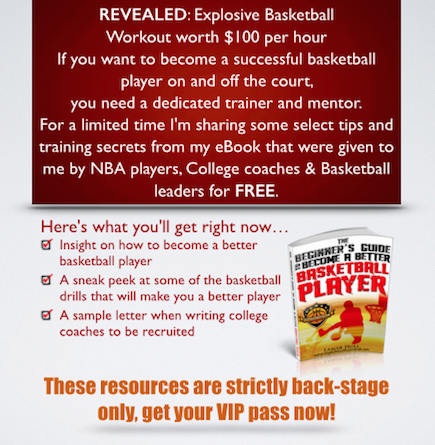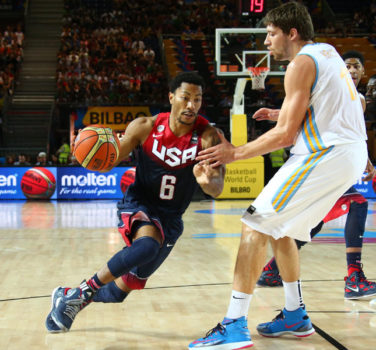
- 0
- 6.2K
- 0 likes
2-3 Zone Offense
 Here are some 2-3 zone offensive tips that will help your team become more effective when facing the traditionally 2-3 zone defense. Having a 2-3 zone offense is very important because it will create opportunities for your team to score. The 2-3 zone defense (2-1-2) is the most common zone defense used in basketball.
Here are some 2-3 zone offensive tips that will help your team become more effective when facing the traditionally 2-3 zone defense. Having a 2-3 zone offense is very important because it will create opportunities for your team to score. The 2-3 zone defense (2-1-2) is the most common zone defense used in basketball.
It’s set up so that the team can pack it in and stop the opponent’s inside presence. The 2-3 and the 2-1-2 zone defenses are pretty much the same thing, except for the fact that middle-low defender is placed a little bit higher in the paint in the 2-1-2 zone defense.
The downside of any zone defense is that it can be ripped open by good high percentage outside shooting. To get quality looks from the outside you have to get the basketball in the teeth of the zone defense.
When playing against a 2-3 zone defense, play inside-out. What that means is, have your players get the ball to their bigs in the paint. This will force the zone defense to shrink even more, which will result to kick outs and open shots.
So from a coaches’ perspective, how do you teach younger players the 2-3 zone offense? Well the basics still apply. You should always ask yourself, is the simple 2-3 zone attack the best way to go?
You as a coach will know your team better than anyone, but yes, in most cases it is. Teach the players the 2-3 zone and then address more plays as the season progresses. So why should we start off with the basics, such as the 2-3 zone?
Well the main reason is because we want to get the ball in the middle of the paint so we can get some quality shots, which was discussed above.
Usually, that is the best tactic when playing against any zone defense. The defense has to decide do they want to play the big man tight or are they over concerned about the outside shooting.
Of course, you need some knock down shooters from the outside, even some mid-range shooters, but your shooters have to be ready as there are a lot of kick outs when playing against a zone defense. Something else that is imperative to destroying a zone defense is having a slashing guard(s).
I used to love playing against a zone defense, because I would drive in the open gaps and force the defense in. This allowed me to drop the basketball down to my bigs or kick out to my shooters.
When the ball is kicked out, shooters do not have to shoot immediately. Pass the ball around the perimeter to get better looks inside. Once the ball is inside, the big can look for his shot as well or the other post player who should be on the block.
A simple rule of thumb you should follow when playing against a zone: one post touch before a shot goes up. The only time there is an exception is when there is a fast break or the offense is in transition. So what does that mean?
We want to get a defensive rebound and run with it. You would rather push the basketball and not let the defense set up in their zone, this will definitely keep them on their heels.
If the zone defense is quick at getting back, then use the one post touch ruling instead. When you are discussing plays with your team it’s important to talk about pump fakes. Some of you may ask what pump fakes are. Well pump fakes are known as a power pass.
A player will generally fake the pass once, if not twice. They do this in order to set up the pass and give it more momentum. It’s also used by players who create their own shots. The pump fake is very valuable to the game.
Utilizing pump fakes will keep the defense modest and will avoid players telegraphing their passes. This is very important when playing against a zone defense and trying to get the ball in the middle.
Remember, when playing against a 2-3 zone defense or any zone defense, get the ball in the middle. Push the ball so that the zone defense can’t set up, don’t play to the pace of your opponent.
Make sure your shooters are ready to shoot and you have your guards penetrating the gaps to create open looks. Here are 3 simple strategies to attack a zone defense.
Share this article if you think there is valuable information. You should definitely comment and provide tips that I may have missed or you can elaborate on. Thanks for reading!








LEAVE A COMMENT